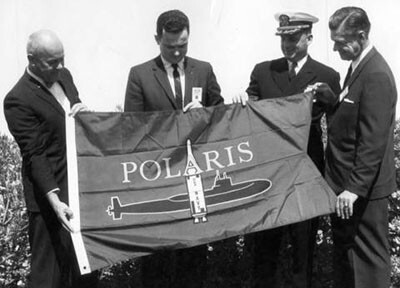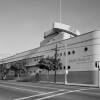The Enchanted Nuclear Robots of Disney’s Tiki Room

Union Bank is a proud sponsor of Lost LA. 
A popular urban legend claims that late in 1966, on the verge of succumbing to lung cancer, Walt Disney chose to have himself cryogenically frozen. Though entirely false, this myth highlights several important themes in the innovator's life. A masterful storyteller, Disney used the "Sleeping Death" to great narrative effect in several films and shorts. Disney also tirelessly sought out cutting-edge technologies, providing a window to the world of tomorrow for his audiences. He transformed the fantastic into the familiar, both through his cinematic efforts and at his real-world dreamscape, Disneyland. While Disney did not delve into the speculative science of cryogenics to preserve his life, he did borrow the mechanical brain of a nuclear missile to simulate life, creating a new type of entertainment in the process.

Disney's public association with rocket science and space-age technology began with Wernher von Braun's series of magazine articles called "Man Will Conquer Space Soon!" Von Braun, along with a select cadre of other scientific luminaries, published the articles from 1952 to 1954 explaining the challenges, possible solutions and important benefits of a proposed manned space program. Disney, in the midst of planning his theme park, found the scientist’s vision compelling and suggested a collaboration. Legendary Disney animator Ward Kimball, working with Von Braun as technical advisor and host, turned the articles into three of the episodes for the ABC television anthology “Walt Disney’s Disneyland.”
More on Fantasyland and Lost LA
Disney sold the series to ABC in order to finance Disneyland and many episodes featured behind-the-scenes footage of the park’s construction, as well as the cutting-edge techniques used for creating Disney cartoons and films. The episodes featuring Von Braun combined narration and animation and introduced the American public to a realistic, if optimistic, plan for space travel. While the scientist appeared on television hoping to generate popular support for exploration, he was also working with the United States Army as technical director of the Redstone Arsenal, a facility dedicated to research and development for the Defense Department. Though Von Braun suggested that the rocket systems he and his team were designing could be adapted for space flight, his military employers were more interested in the development of ballistic missiles.
Throughout the 1950s Von Braun led a cadre of scientists and engineers racing the Russians to establish effective intercontinental weapons systems for the U.S. Army and Navy. Von Braun’s success with the V-2, the world’s first long-range guided ballistic missile and the first man-made object launched into space, led directly to the Jupiter intermediate-range ballistic missile. Although Jupiter fit the Army’s requirements, the Navy determined that the weapon’s liquid-fueled engine was too dangerous for use on a submarine. The altered design criteria forced engineers to develop a multi-stage solid-fuel engine. That led to the development of the Polaris missile, which became the first submarine-launched ballistic missile that also featured a new type of launch control mechanism.

An important aspect of the Polaris launch system hinged on the fact that the conditions under which the missiles might be launched were constantly changing. Different underwater currents, temperatures, and flexing of the metal hull all contributed to the difficulty of a successful launch. In order to minimize human errors and to automate the sequence as much as possible, scientists developed an audio control system. A magnetic audio tape with a series of prerecorded cues precisely timed to account for the submarine’s movement, controlled the launch machinery. This new technology, invented to deliver nuclear destruction, proved exactly what Disney needed for his wonderland developed for children.

By the time of the first successful test of the submerged Polaris happened in 1960, the five-year-old Disneyland was world-famous and still growing. As an expansion of Adventureland, Disney proposed the Enchanted Tiki Room, a Polynesian-themed restaurant featuring a musical floor show with trained birds. The logistics, however, overmatched Disney’s imagination. Live animals would be unpredictable and messy, while human performers might be equally unreliable. However, with technology purchased from the weapons program led by his associate Von Braun, mechanical performers would make Disney’s vision a reality.

Disney’s Imagineers used the magnetic tape system from Polaris to synchronize the air and fluid tubes which drove the electromechanical birds’ movements. The tape also controlled the lighting and music through audio impulses, synchronizing the performances and effects with the soundtrack. The computer system filled the entire basement under the Tiki Room and, because of the heat generated by the machinery and the need to keep the system cool, the Tiki Room became the first air-conditioned attraction at Disneyland.
The Enchanted Tiki Room, filled with these electromechanical performers, opened in 1963 and thrilled audiences. This type of robotic entertainment, dubbed Audio-Animatronics, became the centerpiece of multiple attractions across Disneyland and the other Disney parks, becoming more sophisticated as new technologies allowed for more precise control. In the park today, what was once controlled by the artificial brain of a nuclear missile is now run by the equivalent of a MacBook. Disney's imagination and the Imagineering team’s engineering transformed Von Braun’s military technology, leaving a lasting legacy of joy for millions of park visitors. Though Walt Disney did not have himself cryogenically preserved, his vision lives on, performing perfectly for audiences every twenty minutes.
Top Image: The outside of The Enchanted Tiki Room at Disneyland | Public Domain















